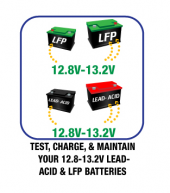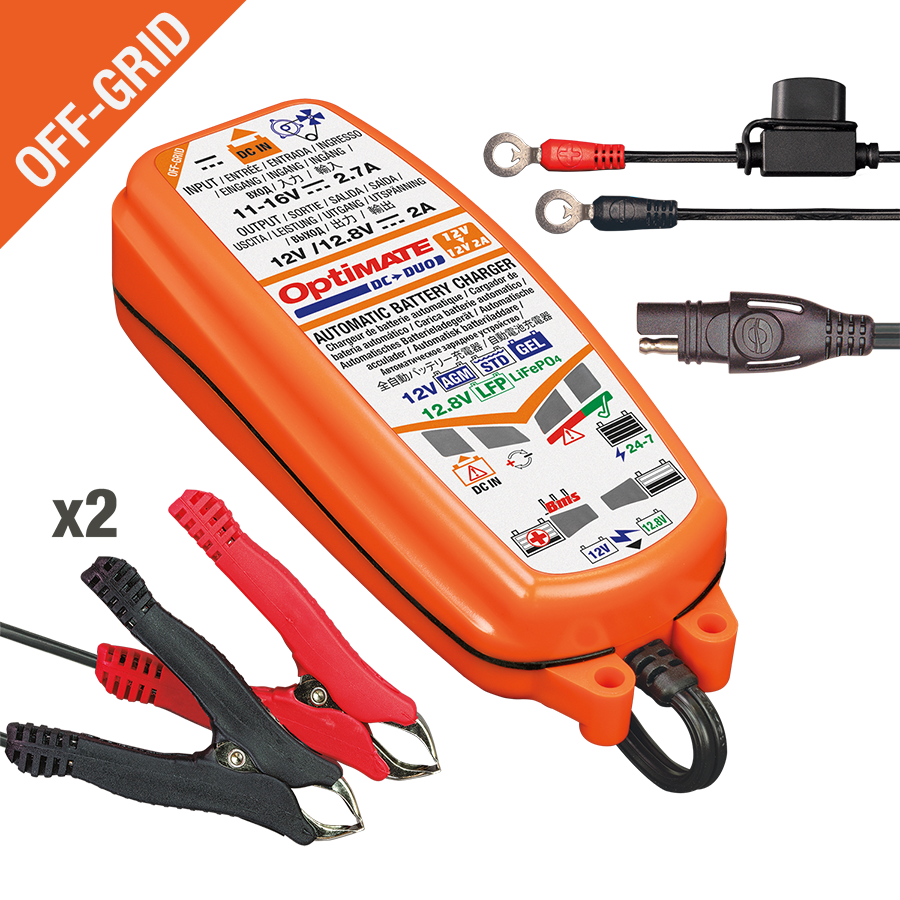Rednecktek
Solar Wizard
So I've got a small solar system in my pump house and 2 ATV's that are going to live up there in the near future. What I think I want is some sort of charging system tht will take power from my 12v system and do all the fancy absorption/equalization/etc functions that keep the FLA batteries in the ATV's happy while they're sitting in the shed for months on end untouched.
What I've got installed so far:
1x 120Ah AGM battery
1x 120Ah FLA battery (I know, but I had them already)
20a Weize MPPT SCC with 20a available on LOAD ports
2x 100w panels in series, west facing (I'll work on remounting it when the inspectors aren't looking)
28w of 12v LED lighting
USB/Cigar block (to feed the phone and speaker, gotta have TUNES!)
What I think I'd like is a basic 2-5a battery tender that would feed from 12v and do all the maintenance functions, but they don't seem to exist soooooo....
I can think of 3 ways to keep the ATV's topped up, all of them have their Pro's and Con's and I'm on a serious budget so take that into account please.
Option 1: Load Terminals -> DC Fuse Block -> pigtail -> ATV
Pro: Uses what I have on hand already, cuts charging to the ATV's if winter really, REALLY sucks and the panels can't keep up via Low Voltage Cutoff.
Con: Just provides a constant voltage source of power, no other functions.
Option 2: Load Terminals -> DC-DC Converter -> pigtail -> ATV
Pro: Should provide all the maintenance functions needed, sources from existing 12v system.
Con: Most expensive option as each DC-DC converter is going to be about $100 and I don't know if I can do both pigtails from the same converter OR if I'm going to need a DC-DC converter for each ATV. Options I'm looking at are Renogy 20a DC-DC, the Atem Power 20a DC-DC, or the Kanruis 20a DC-DC units. 20a should be WAY more than I need for the little batteries but I don't see them any smaller really.
Option 3: Load Terminals -> DC Fuse Block -> Magic 12v source battery tender -> pigtail -> ATV
Pro: Would provide all the maintenance functions I'm looking for, should be cheaper than the DC-DC converters?
Con: No luck finding battery tenders that don't require mains power.
So y'all, any ideas for an Option 4 or a 12v based tender or am I overthinking this whole project? I really don't want to have to replace ATV batteries every time I head up there. That gets expensive fast!
What I've got installed so far:
1x 120Ah AGM battery
1x 120Ah FLA battery (I know, but I had them already)
20a Weize MPPT SCC with 20a available on LOAD ports
2x 100w panels in series, west facing (I'll work on remounting it when the inspectors aren't looking)
28w of 12v LED lighting
USB/Cigar block (to feed the phone and speaker, gotta have TUNES!)
What I think I'd like is a basic 2-5a battery tender that would feed from 12v and do all the maintenance functions, but they don't seem to exist soooooo....
I can think of 3 ways to keep the ATV's topped up, all of them have their Pro's and Con's and I'm on a serious budget so take that into account please.
Option 1: Load Terminals -> DC Fuse Block -> pigtail -> ATV
Pro: Uses what I have on hand already, cuts charging to the ATV's if winter really, REALLY sucks and the panels can't keep up via Low Voltage Cutoff.
Con: Just provides a constant voltage source of power, no other functions.
Option 2: Load Terminals -> DC-DC Converter -> pigtail -> ATV
Pro: Should provide all the maintenance functions needed, sources from existing 12v system.
Con: Most expensive option as each DC-DC converter is going to be about $100 and I don't know if I can do both pigtails from the same converter OR if I'm going to need a DC-DC converter for each ATV. Options I'm looking at are Renogy 20a DC-DC, the Atem Power 20a DC-DC, or the Kanruis 20a DC-DC units. 20a should be WAY more than I need for the little batteries but I don't see them any smaller really.
Option 3: Load Terminals -> DC Fuse Block -> Magic 12v source battery tender -> pigtail -> ATV
Pro: Would provide all the maintenance functions I'm looking for, should be cheaper than the DC-DC converters?
Con: No luck finding battery tenders that don't require mains power.
So y'all, any ideas for an Option 4 or a 12v based tender or am I overthinking this whole project? I really don't want to have to replace ATV batteries every time I head up there. That gets expensive fast!





